 W
WThe Altai mole is a species of mole in the family Talpidae. It is found in northern Mongolia through the taiga zone of the Siberia in Russia.
 W
WThe Anderson's shrew mole is a species of mammal in the family Talpidae. It is endemic to China. Its species name "andersoni" was chosen to honor American scientific collector Malcolm Playfair Anderson.
 W
WThe Balkan mole is a species of mammal in the family Talpidae. It is found in Montenegro, Albania, North Macedonia and Greece, including the island of Corfu.
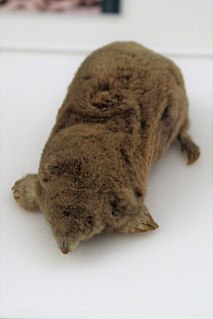 W
WThe blind mole, also known as the Mediterranean mole, is a mole found in the Mediterranean region. It is similar to the European mole, differing most prominently in having eyes covered with skin. It is found in Albania, France, Greece, Italy, Monaco, Montenegro, San Marino, Serbia, Slovenia, Switzerland, and Turkey.
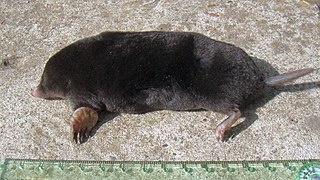 W
WThe Caucasian mole is a mammal in the family Talpidae that is endemic to the Caucasus and Talysh Mountains of Armenia, Georgia, Russia, Turkey and Iran.
 W
WThe Chinese shrew mole is a species of mammal in the family Talpidae. It is endemic to China, Sichuan Province. Its natural habitat is temperate forests.
 W
WThe Echigo mole is an endangered species of mammal in the family Talpidae. It is endemic to Japan, being found only on the Echigo plain, Niigata prefecture.
 W
WEuroscaptor is a genus of mammal in the family Talpidae. Members are found in China, Japan and other countries of South and Southeast Asia. It contains the following species as of October 2018:Greater Chinese mole Kloss's mole E. kuznetsovi Long-nosed mole Malaysian mole Himalayan mole Japanese mountain mole E. orlovi Small-toothed mole Euroscaptor subanura
 W
WThe Gansu mole is a species of mammal in the family Talpidae endemic to China, where it occurs in Shaanxi, Gansu, Sichuan, and Qinghai. It is the only species in the genus Scapanulus. The mole is the only member of a tribe of genera commonly known as "New World moles", the Scalopini, not to live in North America.
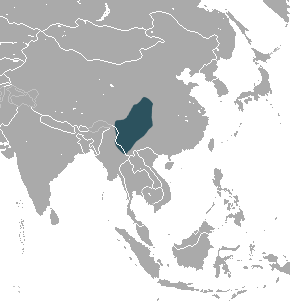 W
WThe gracile shrew mole is a species of mammal in the family Talpidae. It is found in China and Myanmar.
 W
WThe greater Chinese mole is a species of mammal in the family Talpidae. It is found in China and Vietnam.
 W
WThe greater Cuban nesophontes is an extinct species of eulipotyphlan that was native to Cuba. It is thought that the introduction of rats lead to its demise.
 W
WThe Himalayan mole is a species of mammal in the family Talpidae.
 W
WThe inquisitive shrew mole is a species of mammal in the family Talpidae. It is endemic to the Yunnan province of China, although its range is thought to extend over the border into Burma.
 W
WThe insular mole is a species of mammal in the family Talpidae. It is found in China and Taiwan, where it is also known as the Formosan blind mole. The species was first described by Robert Swinhoe in 1863.
 W
WThe Japanese mole, also known as Temminck's mole, is a species of mole native to East Asia. Its range extends south from Japan. A solitary and diurnal species, it can live for up to 3.5 years in the wild.
 W
WThe Japanese mountain mole is a species of mammal in the family Talpidae. It is endemic to Japan. Its natural habitats are temperate forests and temperate grassland. Although the Japanese mountain mole is currently classified in the genus Euroscaptor, a study published by the American Society of Mammalogists suggests that they do not truly belong to this genus because of earlier evolutionary divergence from other Euroscaptor species.
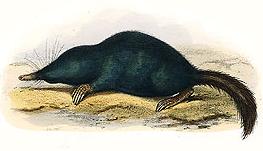 W
WThe Japanese shrew mole or himizu (ヒミズ) is a species of mammal in the family Talpidae. It is endemic to Japan and is found on Honshu, Shikoku, Kyushu, Awaji Island, Shodo Island, Oki Islands, Tsushima Island, Goto Islands, Mishima Island, and Awashima Island, but is absent from Hokkaido, which is north of Blakiston's Line. It is one of three Urotrichini and it is the only species in the genus Urotrichus. It is common between sea level and approximately 2,000 m.
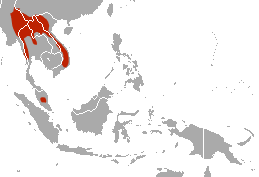 W
WThe Kloss's mole is a species of mammal in the family Talpidae. It is found in Laos, Malaysia, and Thailand.
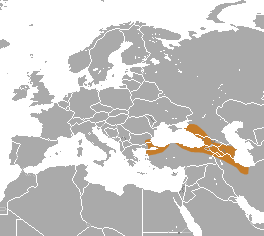 W
WThe Levant mole is a species of mammal in the family Talpidae. It is found in Armenia, Azerbaijan, Bulgaria, Georgia, Russia, Iran and Turkey.
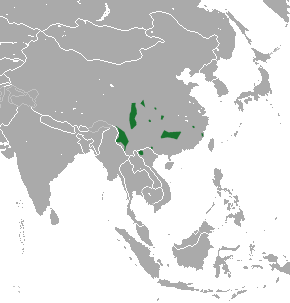 W
WThe long-nosed mole is a species of mammal in the family Talpidae. It is endemic to China, where it has a widespread distribution.
 W
WThe long-tailed mole is a species of mole in the family Talpidae. It is found in China, Vietnam and Myanmar.
 W
WLusorex is an extinct genus of heterosoricid shrew that lived in China during the Miocene. The only species is L. taishanensis, fossils of which are kept at the Paleozoological Museum of China.
 W
WNespohontes hemicingulus is an extinct eulipotyphlan of the genus Nesophontes that was once endemic to the Cayman Islands ; the shrew lived in the island montane forest/brush endemic to the Cayman Islands and was an insectivore. It is known from subfossil remains, that bear bite marks attributed to crocodiles, collected from caves, sinkholes and peat deposits on the Islands between the 1930s and the 1990s. It was named in 2019.
 W
WPère David's mole is a mole found only in Kurdistan Province, Iran. It is listed as a data deficient species. The species is named after the zoologist Armand David. As T. streeti, it is known as the Persian mole.
 W
WThe Puerto Rican nesophontes, or Puerto Rican shrew, is an extinct eulipotyphlan endemic to Puerto Rico.
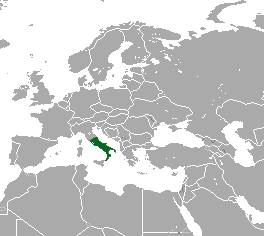 W
WThe Roman mole is a species of mammal in the family Talpidae. It is found in southern Italy. It was last recorded on Sicily in 1885. There is also an unconfirmed report about an isolated subpopulation in the Var region of southern France.
 W
WThe Russian desman is a small semiaquatic mammal that inhabits the Volga, Don and Ural River basins in Russia, Ukraine and Kazakhstan. It constructs burrows into the banks of ponds and slow-moving streams, but prefers small, overgrown ponds with abundance of insects, crayfish and amphibians. The Russian desman often lives in small groups of two to five animals, and appears to have a complex communication and social system.
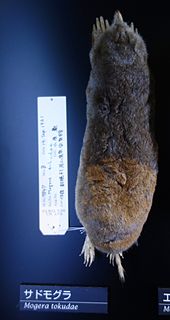 W
WThe Sado mole or Tokuda's mole is a species of mammal in the family Talpidae. It is endemic to Japan.
 W
WThe Scalopinae, or New World moles, are one of three subfamilies of the family Talpidae, which consists of moles and mole-like animals; the other two subfamilies being the Old World talpids and the Chinese shrew-like moles (Uropsilinae). The Scalopinae are the only Talpidae subfamily to consist entirely of undisputed moles and no mole-like close relatives such as shrew-moles or desmans. They are found virtually everywhere soil conditions permit in North America, except northern Canada and those areas of northeastern Mexico where the soil is too sandy. There is also one species in China.
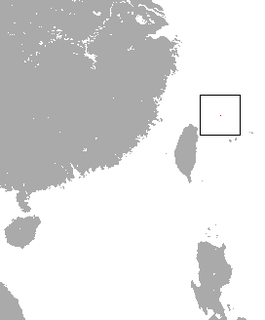 W
WThe Senkaku mole, also known as the Ryukyu mole, is a species of mammal in the family Talpidae. It was formerly classified as being the only species in the genus Nesoscaptor. It is endemic to the Uotsuri-jima of the disputed territory of Senkaku Islands, also known as the Diaoyutai Islands. It is most similar to the Insular mole of Taiwan and Mainland China.
 W
WThe short-faced mole is a species of mammal in the family Talpidae. It is monotypic within the genus Scaptochirus. It is endemic to China.
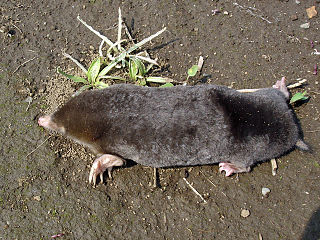 W
WThe small Japanese mole is a species of mammal in the family Talpidae. It is endemic to Japan. Even though they are extinct in central Tokyo, they are found in the grounds of the Imperial Palace.
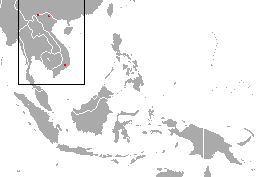 W
WThe small-toothed mole is a species of mammal in the family Talpidae. It is found in Di Linh, in southern Vietnam, and Rakho near the border of Vietnam and China, and in southern Yunnan, China, near the Vietnamese border. It is likely that it has a broader distribution, especially in places between the currently known locations.
 W
WThe Spanish mole is a species of mammal in the family Talpidae. It is found in Portugal and Spain.
 W
WTalpa is a genus in the mole family Talpidae. Among the first taxa in science, Carolus Linnaeus used the Latin word for "moles", talpa, in his Regnum Animale to refer to the commonly known European form of mole. The group has since been expanded to include 11 extant species, found primarily in Europe and western Asia. The European mole, found throughout most of Europe, is a member of this genus, as are several species restricted to small ranges. One species, Père David's mole, is critically endangered. One fossil species, the Tyrrhenian mole, is known from the Pleistocene of Corsica and Sardinia. These moles eat earthworms, insects, and other invertebrates found in the soil.
 W
WThe Townsend's mole is a fossorial mammal in the family Talpidae, and is the largest North American mole.
 W
WTrue's shrew mole is a species of mammal in the family Talpidae. It is endemic to Japan and is a common species above 1000 meters in grassland, shrubland and forest.
 W
WThe shrew moles (Uropsilus) are shrew-like members of the mole family of mammals endemic to the forested, high-alpine region bordering China, Myanmar, and Vietnam. They possess a long snout, a long slender tail, external ears, and small forefeet unspecialized for burrowing. Although they are similar to shrews in size, external appearance, and, presumably, ecological habits, they are nevertheless talpids and considered true moles, as they share a full zygomatic arch with all other moles, while this arch is completely absent in shrews.
 W
WThe western Cuban nesophontes is an extinct species of mammal in the family Nesophontidae. It was found in Cuba and Hispaniola.
 W
WThe white-tailed mole is a species of mammal in the family Talpidae. It is found in Bangladesh, China, India, and Myanmar.